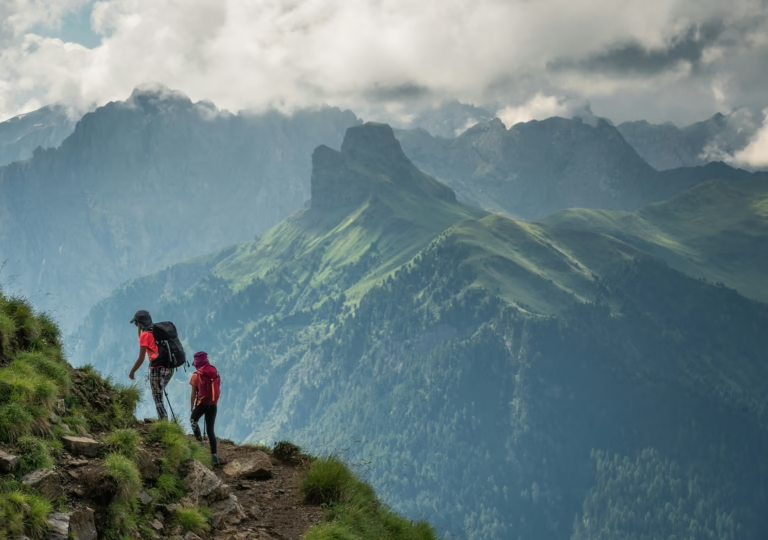Beach camping feels like a special kind of getaway. It makes you feel excited and at ease all at once.
According to a 2023 study published in the Journal for ReAttach Therapy and Developmental Diversities, camping in natural settings, specifically along coastlines, reduces stress and promotes mood-boosting by up to 70% if performed regularly.
If you’re itching to trade the forest trails for sandy shores, I’m here to help you make the most of this amazing experience.
I’ve spent countless nights sleeping under the stars on beaches around the world, and I’ve learned a thing or two about how to camp on the beach comfortably and safely.
In this guide, I’ll cover everything from choosing a location to mastering those sandy tent stakes. Let’s dive in!
How to Camp on the Beach?
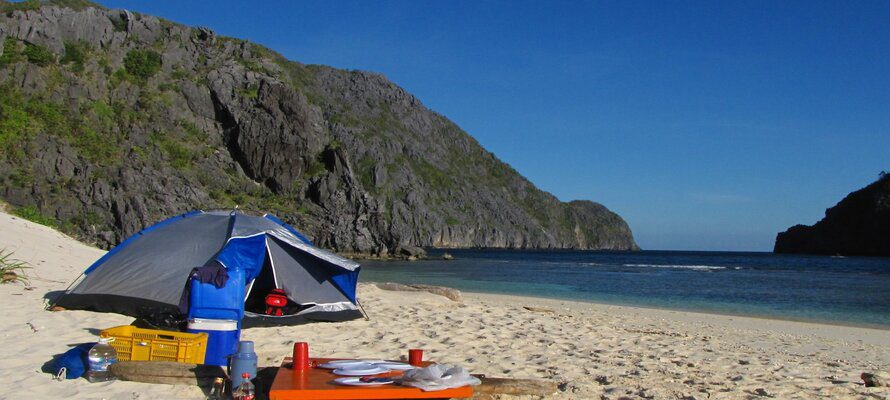
To camp on the beach, choose a spot above the high tide line. Bring a tent suitable for sand and secure it with sandbags or stakes. Pack essentials: water, food, sunscreen. And don’t forget to respect local regulations and leave no trace.
It does demand some extra planning, but that effort pays off when you wake to endless ocean views. Let me walk you through the steps so your seaside escape is smooth sailing.
Before You Go:
Choose Your Location
It’s tempting to find a pretty stretch of sand and just start setting up, but hold on! Many beaches prohibit overnight stays, so do your research ahead of time. Look for state parks, national seashores, or dedicated beach campgrounds that explicitly allow camping.
Websites like Reserve America or local park services are good starting points. Always double-check any permit needs or reservation requirements well in advance.
Check the Tides
This isn’t something I take lightly – it’s crucial for keeping your gear (and yourself) dry. Most tide charts are readily available online or through a quick park service query.
Locate the predicted high tide line for your beach and make sure your camp is safely above it. I usually pick a spot at least 50 feet beyond the high tide mark, just to be extra cautious.
Checking tides is also about safety, says Thomas Ponzo at Travel Youman:
We often see people encountering accidents while they are engaged with camping within the camping sites of Texas.
If you want to ensure your protection, it is important to have a clear understanding about the tides. You will then be able to ensure your safety as you are enjoying a great time in the beach.
by Thomas Ponzo
Pack Strategically
Beach camping calls for some specialized gear. Sand-specific tent stakes are lifesavers; they’re longer and wider than standard stakes, giving you much-needed hold in the loose sand.
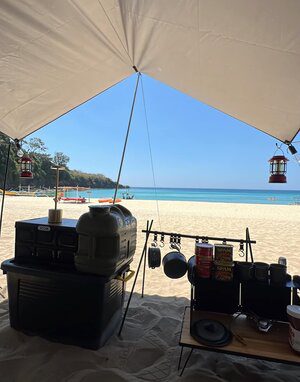
I always throw in a groundsheet under my tent floor – it creates an extra layer against moisture and stops sand from creeping in. Wind can be a real force on the beach, so a tarp or beach tent adds necessary shelter.
You’ll also need plenty of water – more than I’d usually pack for a day hike – and purification tablets or a filter that can handle salt water. Of course, sunscreen is your best friend for those long hours of sun exposure. Finally, a small doormat outside your tent helps keep sand at bay.
Plan Your Meals
Opt for lightweight, non-perishable foods since fresh groceries and firewood may be hard to come by. Think snacks like trail mix, jerky, freeze-dried meals, and canned goods.
Discover more outdoor lunch ideas or outdoor dinner ideas here.
A reliable cooler with ample ice blocks is essential, though some campgrounds offer food lockers if you’re concerned about critters. Keep in mind that beachfront fire bans are common, so if evening ambiance is important to you, double-check local restrictions.
Setting Up Camp:
Pick a Safe Spot
Before unloading your pack, take a moment to survey your surroundings. I look for spots slightly sheltered from the prevailing wind and elevated for sun protection.
Avoid camping too close to amenities like bathrooms or picnic areas – they can get noisy and attract critters. Stay clear of fragile sand dunes and any existing vegetation; these areas are crucial for coastal ecosystems.
Secure Your Tent
Fight the battle against loose sand by investing in sand-specific stakes. They’re longer and often have a corkscrew design for superior hold. Dig deeper than you would on typical soil, and spread your guylines at wide angles to maximize grip.
Trust me, waking up with your tent in the sea is not the type of surprise you want.
Create a Sand-Free Zone
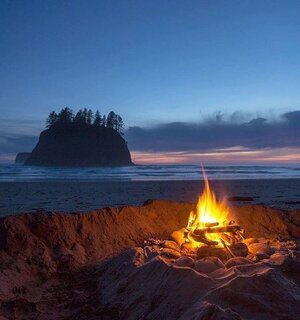
This trick has made my tent camping on the beach life infinitely better. Lay a large mat, tarp, or even an old beach towel outside your tent entrance.
Shake off sandy feet, shoes, and gear here before entering to keep your tent’s interior as grit-free as possible. It prevents unnecessary wear on your camping gear, too.
Build a Responsible Fire (If Allowed)
Many coastal areas have strict fire regulations, so always check for bans beforehand. If fires are permitted, use only existing fire rings or bring your own portable one.
Choose driftwood over buying firewood whenever possible and extinguish your fire completely by dousing it thoroughly with water.
Leave No Trace
Beach environments are particularly fragile. Stick to designated camping spots, pack out every scrap of trash you bring in, and avoid disturbing dune grasses or any wildlife you encounter. We love these wild coastlines – let’s treat them with respect [1].
Tip: If you plan on swimming or spending extended time under the sun, a sturdy beach umbrella, pop-up canopy, or shade tarp makes beach camp life way more comfortable.
Activities to Try While Camping Out on the Beach
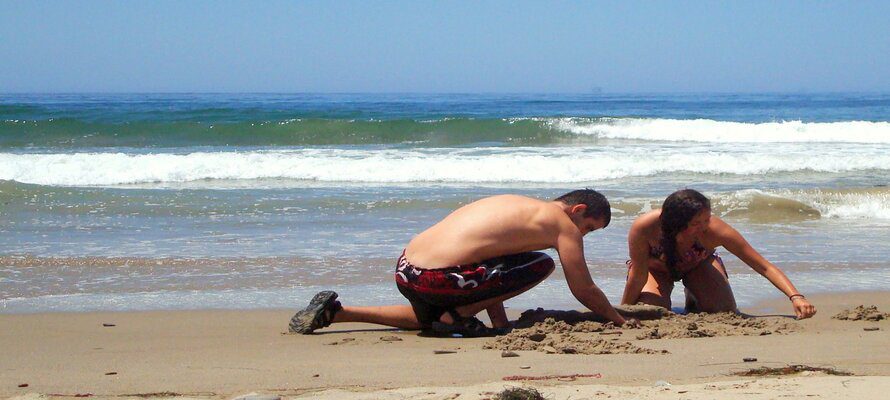
The beach isn’t just for sleeping under the stars; it’s your adventure playground! The best part about beach camping is the mix of relaxing moments and exhilarating campsite activities right at your doorstep.
Here are some beach camping ideas you could try:
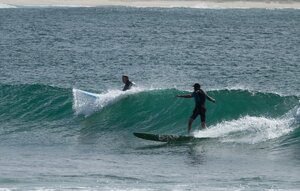
- Swimming and sunbathing: Can you really call it a beach trip without splashing around and soaking up some rays? Just be mindful of currents and riptides, and always reapply sunscreen liberally.
- Beachcombing: You never know what treasures the tide will bring in – find shells, sea glass, or even driftwood for your campfire later.
- Beach games: I always throw in a frisbee or a volleyball for some friendly competition or a football for some classic shoreline action. The wide-open space is too tempting to resist!
- Surfing: If you’ve got the balance, catch a wave! There are usually rental shops with instructors near surf-friendly beaches if you’re looking to learn.
- Snorkeling/diving: If the water’s clear and the marine life is plentiful, put on your gear and explore a whole new world under the surface. Just be sure to stay within your skill level and always be conscious of marine wildlife safety.
- Kayaking / stand-up paddleboarding: Rent one of these for a relaxing way to explore calmer seas, get a closer look at hidden inlets, or just a different perspective of the coastline.
- Fishing: Cast a line and relax – you might even catch your dinner! Just be sure to check local regulations for species limitations or required permits.
- Beach yoga: Practice sun salutations with the soft sand under your feet and the sound of the waves as your soundtrack. There’s something incredibly tranquil about doing yoga against the ocean backdrop.
- Stargazing: The stars really pop away from city lights. Curl up by the remnants of your campfire and feel a sense of awe while staring into the cosmos.
- Tide pooling: Put on some waterproof shoes and explore the mini-ecosystems left behind in rocky pools as the tide retreats. Search for sea stars, sea urchins, or other little coastal critters.
- Nature walks: Follow coastal trails or explore dunes. Watch for unique wildlife, spot interesting plants, and just soak in the rhythmic energy of the crashing waves. Explore the surroundings by either hiking or walking to fully appreciate the beauty of the beach.
6 Bonus Beach Camping Hacks
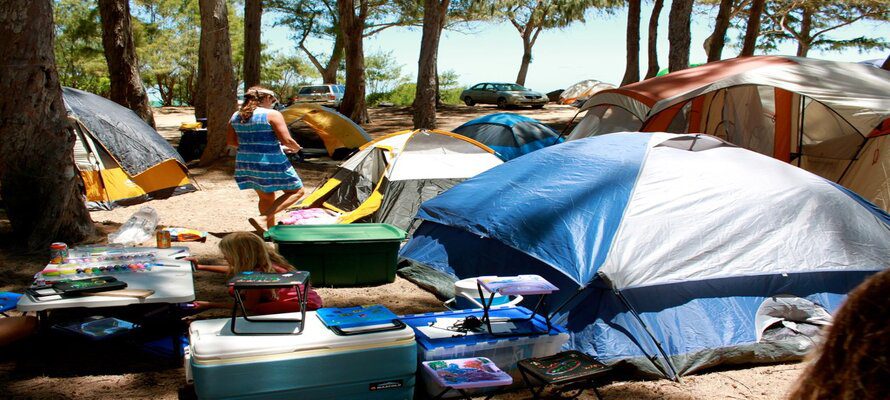
Forget fancy gear – a few clever beach camping tips can take your adventure to the next level!
Here are some of my favorite hacks to make your coastal trip smooth and stress-free:
- Bring a sun-powered shower bag: A dark-colored solar shower bag heats up remarkably fast under the sun. I hang it early for a no-fuss warm rinse later without hauling any extra gear. It might not be luxury, but after a day in saltwater, it truly feels like it!
- Consider multi-purpose gear: Packing light means each item needs to pull its weight. A bandana is as valuable as it is versatile – wear it as a face mask against the wind, a sweatband in the heat, or as an emergency napkin. Sporks work like a charm for most camp dishes, and a humble sarong transforms into a picnic blanket, windscreen, or privacy cover in a pinch.
- Take advantage of beachcomber’s bounty: Driftwood (where permitted) fuels my campfires effortlessly, leaving space in my pack for other gear. Fallen palm fronds offer instant seating around the fire or become simple sun and wind barriers, adding some unexpected functionality to beach finds [2].
- Opt for sand-proof storage: Dry bags and airtight containers fight back against sandy conditions. They safeguard clean clothes and keep snacks safely sealed on their own – or become part of a critter-resistant food hanging system when attached to a sturdy branch with a carabiner.
- Use a natural laundry line: I stretch a line between any available trees or poles. Wet swimsuits and towels dry fast in the breeze, and those delicate tent materials remain unburdened. It’s simple but keeps gear off the ground and promotes quick drying.
- Upgrade your first-aid kit: Beach camping presents specific needs. Along with classic first-aid supplies, sunscreen, aloe vera, and reliable insect bite relief top my list. A pack of wet wipes becomes a lifesaver, cutting through sticky saltwater residue or any sudden messes with ease.
References:
- https://en.wikipedia.org/wiki/Leave_No_Trace
- https://diydriftwood.com/make-your-own-driftwood/


